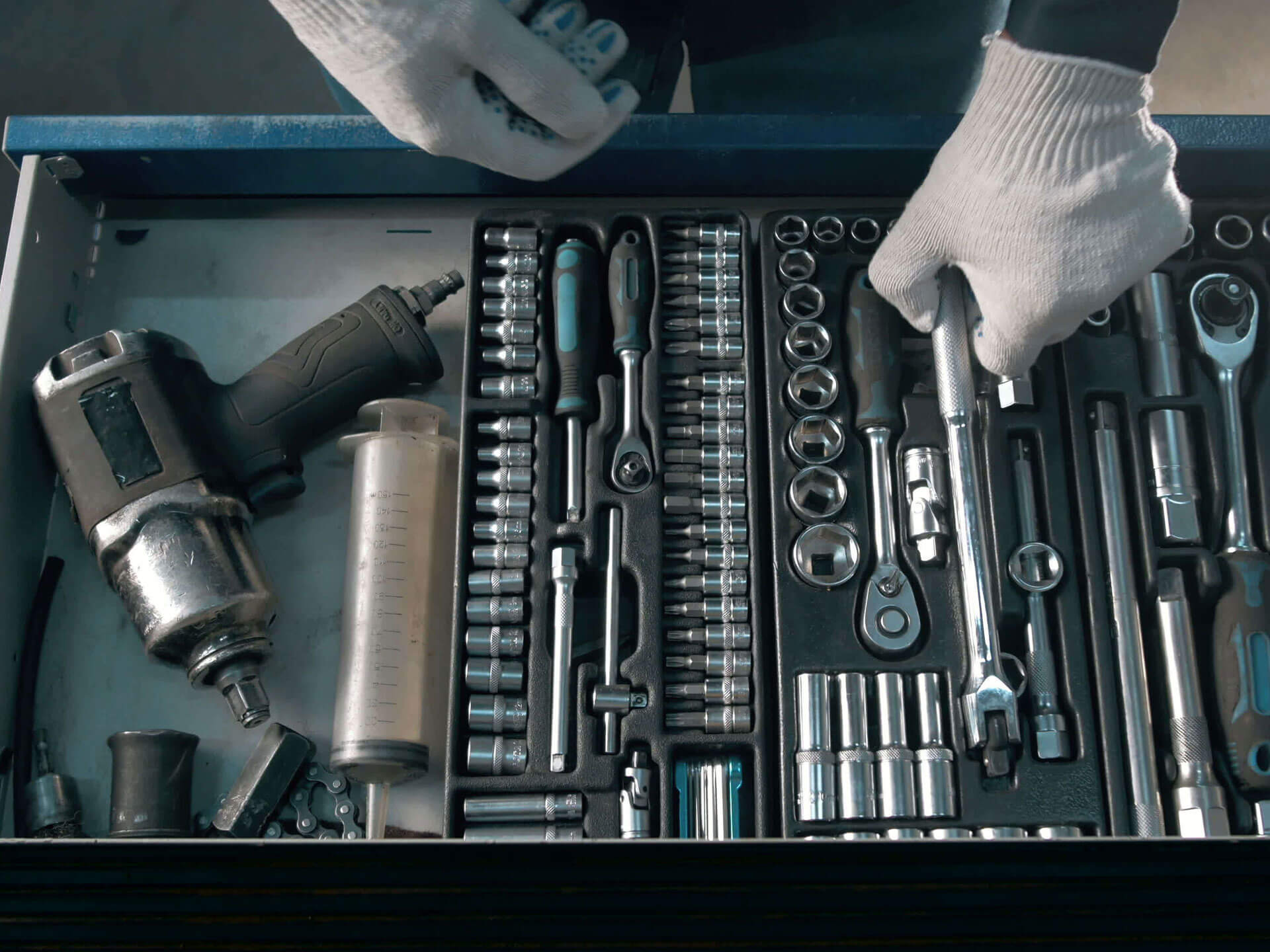Battery replacement – step-by-step
This article contains:
When the car battery is weak, it is time for a battery replacement. Which steps are to be considered and why is it so much more complicated with modern cars?
Car batteries are usually located under the bonnet. However, in modern vehicles the starter battery can also be installed in other places in the vehicle. These days, only about 58% of batteries are installed under the bonnet. About 40% are located in the boot and in the remaining vehicles the battery is even in the passenger cabin. So how do you replace the battery?
Which battery do I need?
A new battery has to be bought before the battery replacement. Here, the recommendations of the vehicle manufacturer are relevant. The following criteria are relevant for the choice of battery:
Battery group sizes
The battery group size describes the standardized size of the car battery, but often several sizes of battery can be installed in a vehicle. For example, the starter battery for a diesel vehicle is usually larger than that for a comparable petrol-driven vehicle. The situation is similar if the vehicle is available with different engine types. Here too, the battery mount is usually designed to accommodate various sizes of battery.
Electrical voltage
With only a few exceptions, in the automotive sector there are now only 12V batteries. In contrast, some vintage cars require special 6V batteries. In this case, a 12V battery cannot be installed, as the electrical components would be destroyed by the higher voltage.
Large commercial vehicles usually have a 24V system. For this, two 12V batteries are connected in series.
Cold start current
A high cold start current (CCA) ensures good starting and is especially important in cold winter weather. The value on the label is determined by a standardized test procedure (in Europe by EN 50342-1) at a temperature of -18°C.
Capacity
The second important value on the label describes the capacity (Ah) of the battery. The capacity is determined with a standardized test procedure and describes how much charge can be withdrawn from the battery before it is completely discharged.
While the cold start current was primarily important for conventional vehicles, in modern vehicles with a large number of electrical components and start-stop systems, the capacity is becoming increasingly important. Learn more about the best battery replacement for a start stop vehicle.
For a small car with only a few electrical components, a battery with 40 – 45 Ah is sufficient. Premium class vehicles and sports cars are equipped with batteries with capacities of up to 110 Ah. The charge capacity of a car battery reduces with increasing age and depends on factors such as ambient temperatures and humidity.

How a conventional car battery works.
How do I find the best battery for my vehicle?
With the wide range of starter batteries with various technologies and power classes, the choice is often difficult. The VARTA Partner Portal for our partner workshops and the VARTA Battery Search for customers makes it easy to select the right battery.
How do I install the new battery?
The instructions by the vehicle manufacturer must be followed for the installation of the new battery. Please also note the information from the battery manufacturer in the booklet for the safe handling of batteries. To prevent reverse polarity, the arrangement of the positive and negative terminals should be noted before removing the old battery. Of course, the engine must also be turned off and key removed.
- Before starting work on the battery, please put on protective glasses. Avoid direct contact with any battery acid which may have escaped.
- First remove the ground cable. This safely prevents a short circuit between the positive terminal and the vehicle body.
- Check the battery compartment for corrosion. Also thoroughly inspect the brackets for rust and damage. Clean the battery compartment and repair as necessary. Corrosion in the area of the battery can indicate leaked battery acid. In this case a workshop should investigate the reason for this.
- Remove surface rust and dirt from the battery terminal clamps, as this causes increased contact resistance and therefore considerable malfunctions or premature battery failure.
- Take care that the terminal clamps are firmly fitted in order to eliminate contact interruptions due to vibrations. When connecting the terminal clamps, care must also be taken that the battery terminals are not damaged by torsion or other mechanical stresses.
- Take care that the battery is properly seated on installation. Tighten the clamps with a torque wrench. The correct torque can be found in the vehicle manual.
- Before connection, check the correct polarity of the cables again. First connect the red cable to the positive terminal and then connect the black ground cable to the negative terminal.
After the battery replacement it might be necessary to recalibrate internal car systems such as airbags, sensors and other comfort functions. This is especially true for more modern cars that are equipped with lots of technical systems or start stop. For such cars it is advisable to let the battery replacement be handled by a professional garage.
How do I dispose of the old battery?
Car batteries are hazardous waste and do not belong in domestic garbage. The disposal of batteries is regulated by law. Car workshops and recycling centers accept old batteries. Did you know that 99% of a battery can be recycled and about 80% of a new battery consists of recycled material? This recycling system prevents pollution of the environment.

